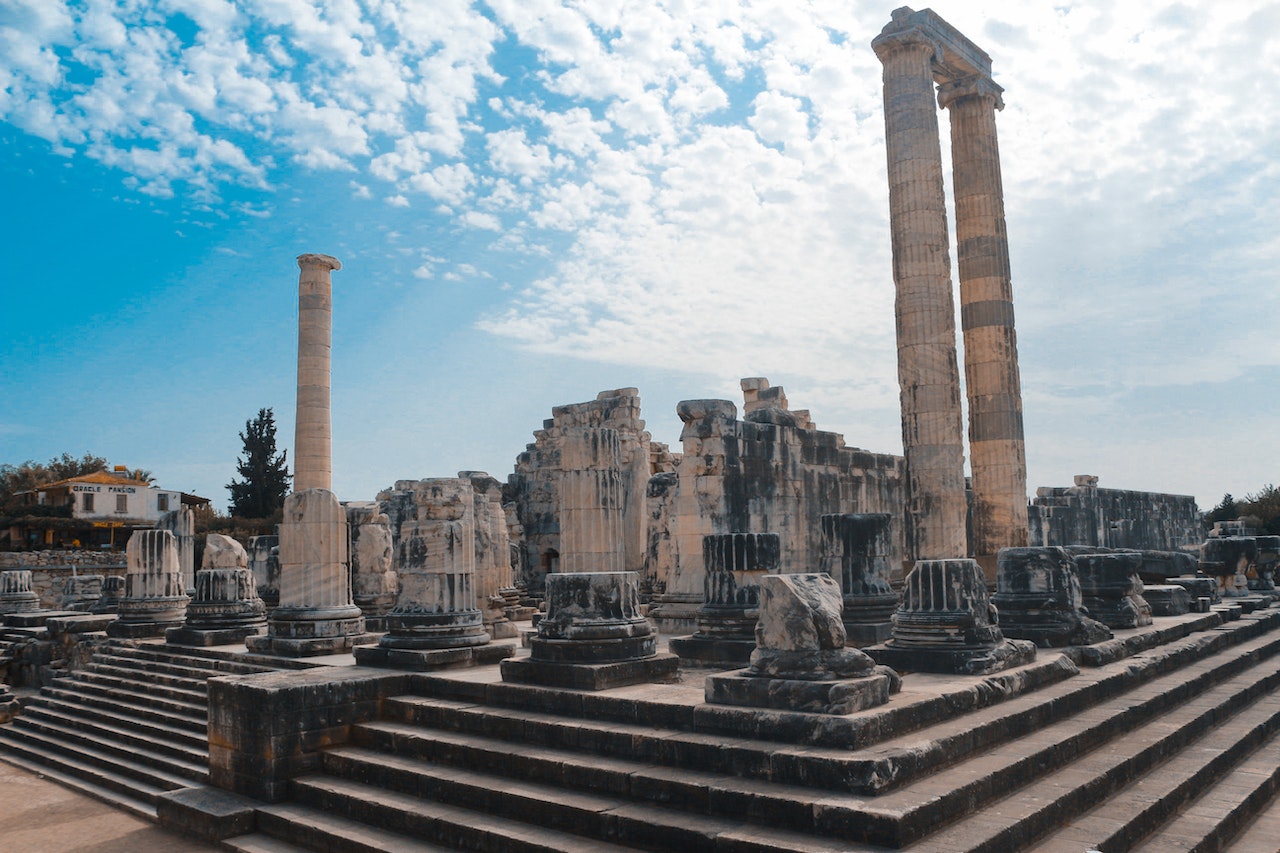By Glenn Maffia
News of a man etching his and his girlfriend’s name, “Ivan + Hayley 23”, into a wall of the 2,000-year-old Colosseum in Rome caused much indignation across the world.
Mainly, I suspect, due to the sheer ignorance exhibited by the perpetrator when he claimed that he “did not realise it (the Colosseum) was so old”.
The utter lack of education so prevalent today is a discussion for another time, but this miscreant is far from being original in his actions.
Despoiling or higher aims?
From time immemorial people have defaced buildings of significant social importance for whatever reason. Here in Didim, we have evidence of the architects inscribing upon the walls of the Temple of Apollo!
Naturally this was no lame-brained graffiti, but rather a template of the plans for the ongoing construction project.
They are still there to this day, if you have the eyes of an eagle, for they have become so very faint due to the weathering of time. Though if the sunlight falls kindly one can detect the weak shadows that illustrate the illustrations.
Why would the architects wish to despoil the finely cut marble blocks of the impressively monumental walls of the Adyton (inner-sanctum)?
Well, that is one of the beauties of discovering an unfinished work of art; the methods of construction are still visually apparent, hence the architects’ plans were drawn upon the walls as they were intended to be polished upon the final completion of the project.
Thankfully, for intellectual edification, that moment never arrived. Another great legacy bequeathed by the Temple of Apollo. Truly, the people of Didim have little idea of what a wonder they have on their doorstep.
An intellectual investigation
These lightly inscribed lines have been known since the excavations of the Adyton by the German archaeologists first revealed them in the early 1900s, though it wasn’t until 1980 they were scientifically investigated by Lother Haselberg.
He found the stylus used to make the inscriptions penetrated a mere half millimetre deep into the marble, and realised they depicted architectural plans used in the temple construction and that of another temple. That second temple being dedicated to Artemis (Apollo’s twin) which was not rediscovered until 2013-2014.
Haselberg noted these plans were depicted horizontally and some perpendicularly The general overview being the horizontal drawings were on a scale of 1 to 1, whereas the perpendicular ones are on a scale of 1 to 6.
The measurement of an obvious pediment inscribed upon the west wall of Apollo’s Adyton coincides precisely with the width of Artemis’ temple It may have taken the best part of a hundred years to ascertain this knowledge, though you must accept that the DAI have excelled themselves with solving this anomaly. Patience is a valuable entity within archaeology. May we all learn from this discipline.
Not a new phenomenon
It is quite apparent the architectural plans etched upon the Temple’s walls constitute many layers of higher intelligence than scratching in lover’s names.
Though it is revealing that an English name, which I cannot recall, infuriatingly, though it was Lee, with a date in the 1800s, was found high up upon the 5th or 6th column-drum of the singular column at Apollo’s temple during recent maintenance work by the DAI.
How could this British person (yes, another Brit abroad!) climb so high to inscribe his name? In short, he didn’t, the rubble within the Pronaos (literally the ‘pre-holy sanctum’) meant this high elevation was attainable by simply walking to it.
Therefore, there is a distinction between a rather puerile gesture of, no doubt, fleeting adoration and the practical construction processes of yesteryear. We are supposedly further along the evolutionary train, our technology superior and our educational background far superior than our ancestors. Think again on all counts!
